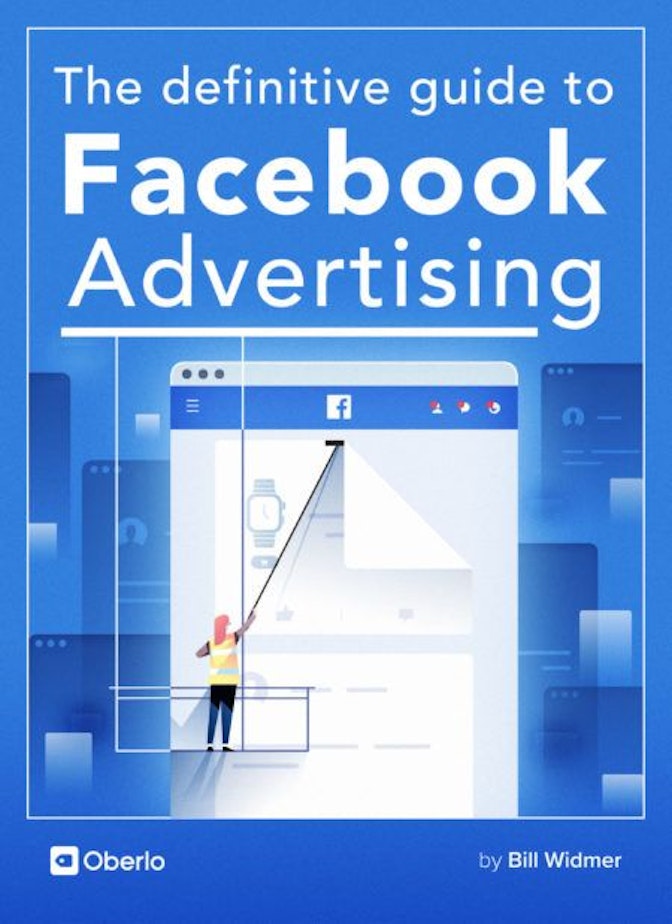By now you know how to run a profitable Facebook ad campaign. But you may still have some questions. That’s where this Chapter comes in.
Most of the Facebook ads questions were answered throughout this eBook, but the answers are easy to miss. So, we created this list of Facebook advertising FAQs to put all the answers in one place!
The most commonly asked questions are:
- How much budget should I allocate to my ads?
- How often should I update my ads?
- Why does my CPC/CPA keep increasing?
- If I’m already running Google AdWords campaigns, do I still need Facebook ads?
Let’s dive in!



1. What’s a good Facebook Ads Budget?
The actual minimum Facebook ads budget you’re allowed is $1 per day, or twice your CPC.
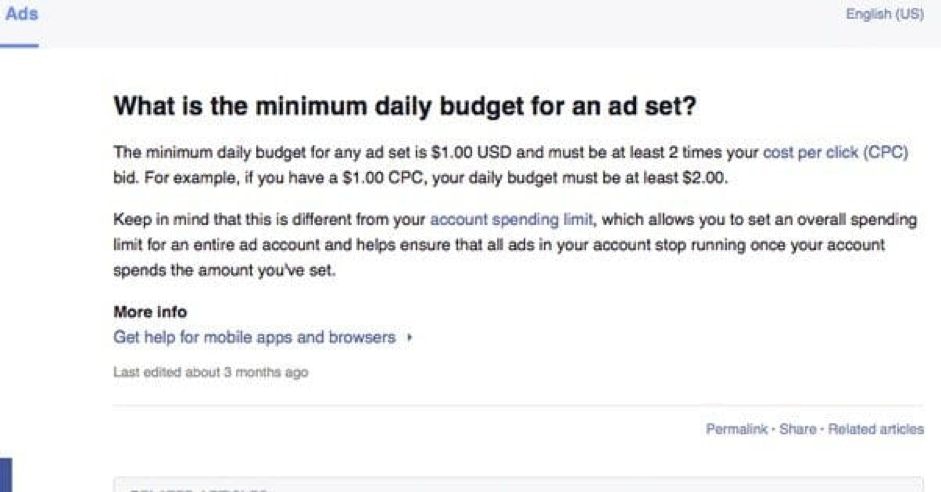
→ Click Here to Launch Your Online Business with Shopify
But back in Chapter 3, I mentioned you should have a minimum test budget of $100. So what’s the best Facebook ads budget to start with?
Truthfully, your budget shouldn’t just be a number you pulled from an article as a recommended minimum. It should be tailored specifically to your goals.
For example, your goal might be to:
- Grow your audience to 10,000 fans
- Sell 100 widgets this week
- Attract 50 hot leads
- Or get 1,000 new email subscribers
Each of those will have a different cost associated with them.
In addition to that, your minimum budget will be affected by your niche/industry.
The entertainment industry has extremely low CPC and CPM. But a ‘boring’ industry, such as construction or law, usually have higher advertising costs. After all, people are on social media to connect and be entertained, not to find a lawyer.
It also depends on your starting point. Are you building a Facebook audience from scratch? Or do you already have engaged fans? These factors affect the cost of advertising.
So, while $100 is a good starting test budget, this figure should be used to figure out your REAL budget. Base your future budget off the results from your initial test campaign.
Let me explain.
Say you test an ad (using the split test method we covered in Chapter 5) and you find your CPA is around $2. If your profit margin on a product is $2 or more, you can scale this ad up almost infinitely and continue to make money, especially on remarketing ads and your growing email list.
In this case, I would spend as much budget as possible on ads. After all, you’ve achieved that sought-after ‘money machine’.
But say you’re losing money on every variation. At that point, you’ll need to assess a few things:
- Is your audience right?
- Is your offer right?
- Is your website and landing page high-quality and user-friendly?
- Does the message on the landing page match your ad?
- Do you have the budget to continue testing ads, even if you continue to lose money?
Of course, the specific culprit of why your ad might not be working was addressed in Chapter 5, so if you are unsure, go back and read that chapter. But the point I’m making is this:
The best Facebook ads budget for you depends on your specific circumstances. Start with a $100 test budget and review from there.
2. How often should I update my ads?
In Chapter 5, we discussed two important concepts: banner blindness and ad fatigue.
Both of these essentially mean that your ads will eventually become less effective and cost more, forcing you to rotate or change your ads.
How often you should update your ads depends entirely on your own experience. Every industry, offer, and audience will have different tolerances for ad frequency.
The only way to determine the best time to rotate your ads is to review your ad performance periodically. Personally, I would take a quick look every day or two just in case a dip happens, so I can catch it right away. However, looking once or twice a week is acceptable as well.
To review your ads, head over to your Ads Manager. The default page is an overview of your ad campaigns and their performance, but you can also see all your ads at a glance by going to the ‘Account Overview’ tab and clicking ‘Creative Reporting’.

Here you’re looking for increases in your CPC or Cost per Result, decreases in your impressions or reach, or a lower ad frequency. These are all signs of ad fatigue, meaning it might be time to change your ads.
What should you change?
The image is usually the first and easiest thing to switch out. The text can be changed to some effect as well. However, if changing your ads doesn’t improve the metrics, it could mean that your audience is burned out or uninterested in your offer. In that case, you need a new ad campaign entirely.
There’s more information on ad rotation back in Chapter 5.
3. Why does my CPC/CPA keep increasing?
The first thing I look to when CPC/CPA continually increases is ad fatigue or banner blindness, like we covered in the answer above.
However, your costs could also be increasing due to several other reasons, including:
Seasonality in your niche – It’s possible costs are simply higher in some months compared to other months. More on this in Chapter 2 and Chapter 5.
Your maximum bid is too high – In Chapter 2 we covered how to make the most of Facebook’s bidding system. Part of that is setting a maximum or average bid. Facebook does this automatically, but you can cap it yourself.
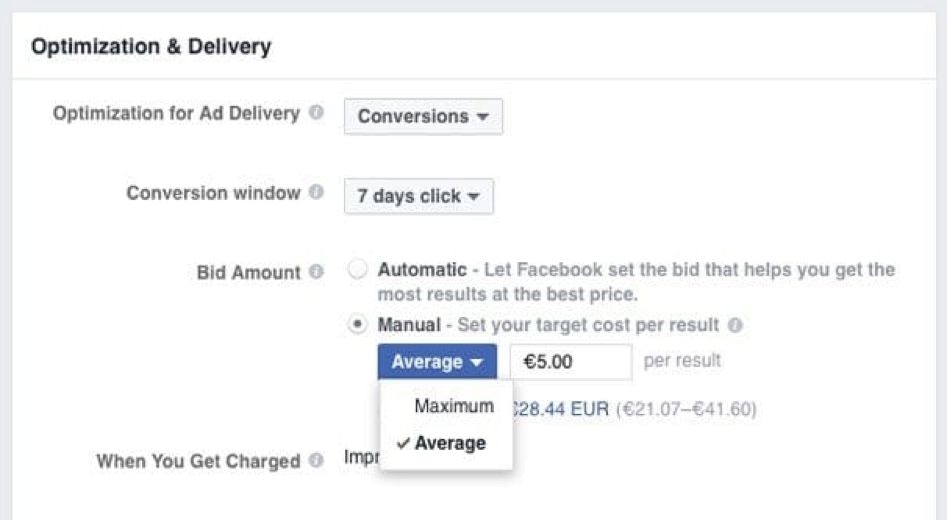
Your relevance score dropped – Facebook assigns a relevance score to each ad you create, which indicates how ‘relevant’ Facebook believes this ad to be to your target audience. If this score drops, your CPC goes up and your reach goes down.
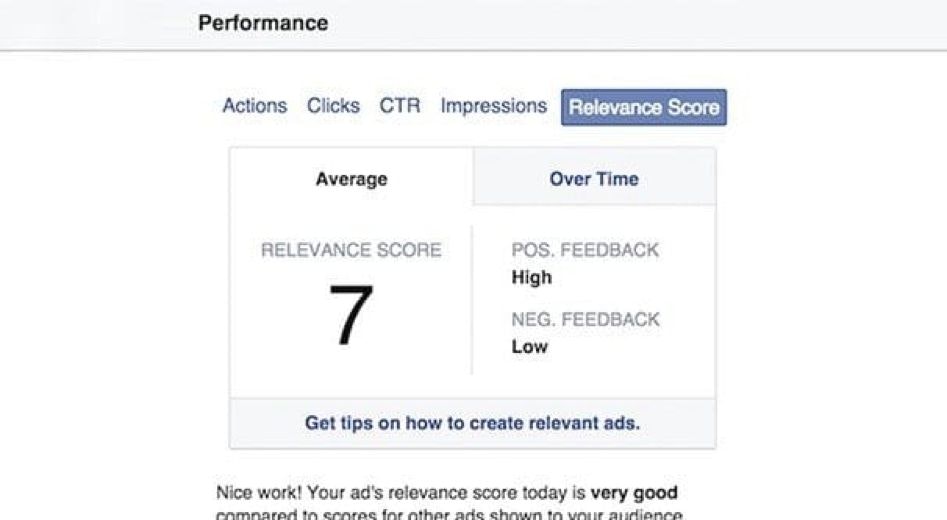
To fix this, you’ll need to make your ad more relevant to your audience. Either change your audience to be more specific to your ad, or change your ad to match your audience.
You have too much text on your ads – Facebook used to have a 20% text rule. If your ad contained more than 20% text (according to their grid tool) it would be rejected or taken down. However, the tool was glitchy and inconsistent, so they updated this rule to instead be based on a sliding scale of text. The more text your ad had, the more limited it would be.
Here’s Facebook’s official image explanation:
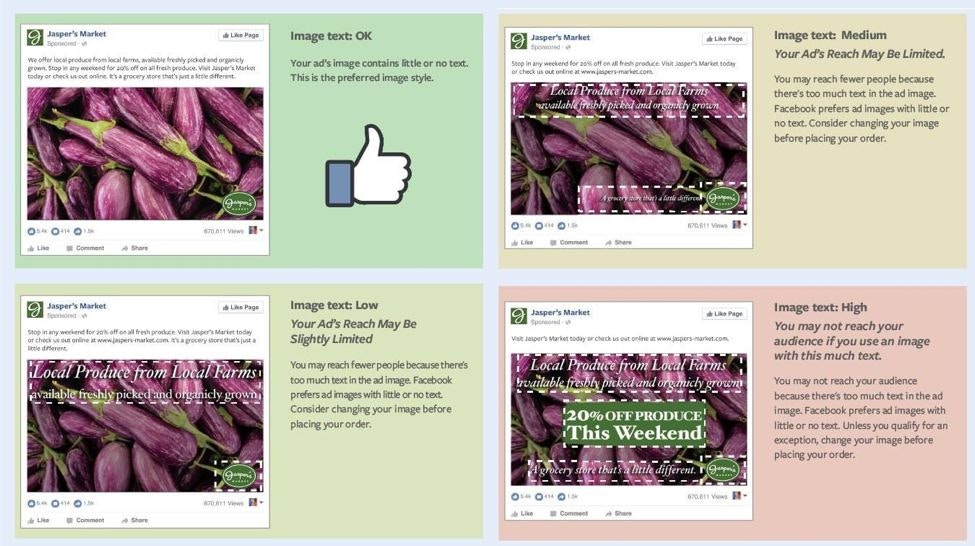
Your ad frequency peaked – Frequency is the number of times people in your audience see your ad. A frequency of .5 means half your audience saw your ad, while a frequency of 2 means everyone in your audience saw the ad twice.
Data shows that people usually click on ads either the first or second time they see them. By the third impression, people are getting tired of the ad, and if they see it more than that, they’re more likely to hide the ad or click to stop seeing ads from your company. Both of those are actions that will drop your relevance score and reduce ad frequency.
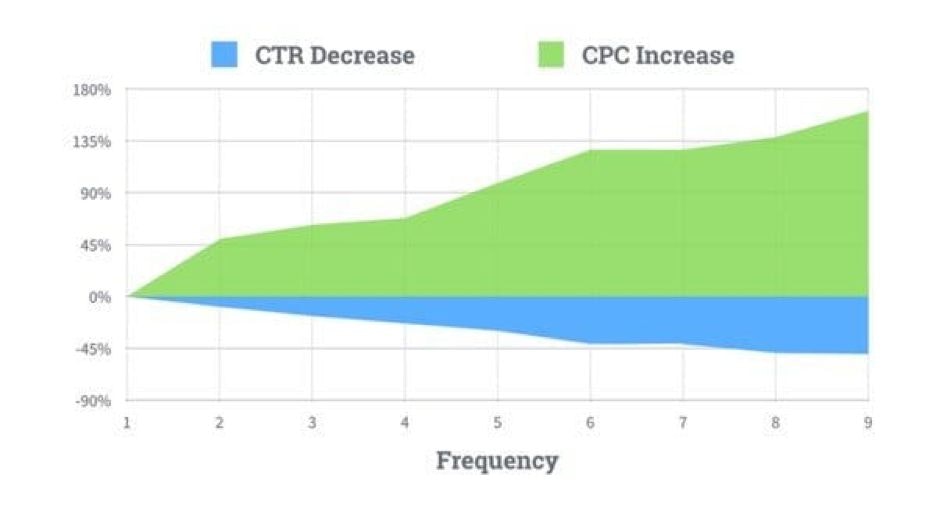
If you reach an ad frequency of 3+, it’s time to create a new ad or target a new audience.
Your competition is increasing – Over time, Facebook will naturally acquire more advertisers. As they do, obviously CPC will rise and ads will cost more to run. If none of the other reasons laid out above seems to fix the issue, this could be the culprit.
In this case, you’ll just have to suck it up or find a way to decrease CPC, such as targeting a different audience or working on your relevancy score to beat the competition.
4. If I’m already running Google AdWords campaigns, do I still need Facebook ads?
This is such a great question – we’re getting away from the specifics of Facebook advertising, and getting closer to overall business growth decisions.
The answer to this question, like most of the others on this list, is that it depends.
Obviously, if you can make both of these mediums profitable, do it. There’s no reason not to – it’s just more money for your business. AdWords tends to have a higher CPA, but also a higher CVR because there’s greater intent. People are literally searching for they want on Google; Facebook is more a means for connecting with friends/family and entertainment.
If you’re already running successful Google ads, keep doing it. But test Facebook ads as well if you have the time. You may be able to get cheaper conversions on Facebook, and that’s always a good thing.
At the same time, realize that both of these platforms have a significant learning curve (you just read a 20,000-word eBook on Facebook alone), so starting, maintaining, and split testing multiple campaigns on two separate platforms can be a major undertaking and huge time sink.
I recommend you either hire a PPC agency or freelancer to help you with this (if you have the budget for it) or sticking to one platform until you’ve automated it to a point where it takes less time to maintain. Unless you just really like running ads, in which case maybe you should start your own agency!
5. What if I can’t find my audience on Facebook?
There are more than 2 billion people on Facebook. Your audience is almost certainly on the platform. The problem is figuring out how to target them.
In Chapter 4 we covered in-depth targeting tactics to find your exact audience. But if you’ve run through all the tactics in that chapter and still can’t seem to find the right target market, here’s a little hack that can help:
First, create a video ad. You can either shoot one yourself or hire someone on Fiverr or Upwork to create it for you.
Next, target a big, broad audience who might be interested in your video. This doesn’t have to be hyper-specific like I recommend in Chapter 4 (you’ll see why in a second).
Run the ad and put an average bid at $0.01 per view. That way you can get a lot of views without spending a ton of money, and only those who are truly interested will see the video.
Finally, run a lead generation retargeting campaign to all the people who viewed the video for at least 10 seconds. Make sure the ad covers the same topic and is related to the video.
You now have an audience on Facebook! Start running ads to them.
6. Where can I find more Facebook ads resources and help?
This eBook was pretty exhaustive. But Facebook advertising is a massive subject and it can’t all be covered in one location. Perpetual learning is key to running winning Facebook ads, especially on a platform that’s constantly changing.
The following people and blogs had a big impact on my own advertising knowledge and in running this eBook. Check them out!
There are loads of other places to learn more about Facebook ads, but these are four of our favorites. Of course, you can also check out the Oberlo blog, which includes many topics around Facebook ads for beginners.
7. What tools are available to help me run Facebook ads?
While Facebook’s Ad Manager provides you with a number of tools to do everything from creating your ads to testing and analyzing the results, there are plenty of other online tools that can help you run better ads.
Canva is a free image editing and creation software that has templates you can use to create awesome Facebook ad images in minutes – even if you’re not a designer!
AdEspresso is more than just a Facebook advertising blog. They also have a Facebook ads tool that lets you split test your campaigns more easily, optimize different elements of the campaigns, see advanced analytics in easy-to-digest graphs and charts, and more.
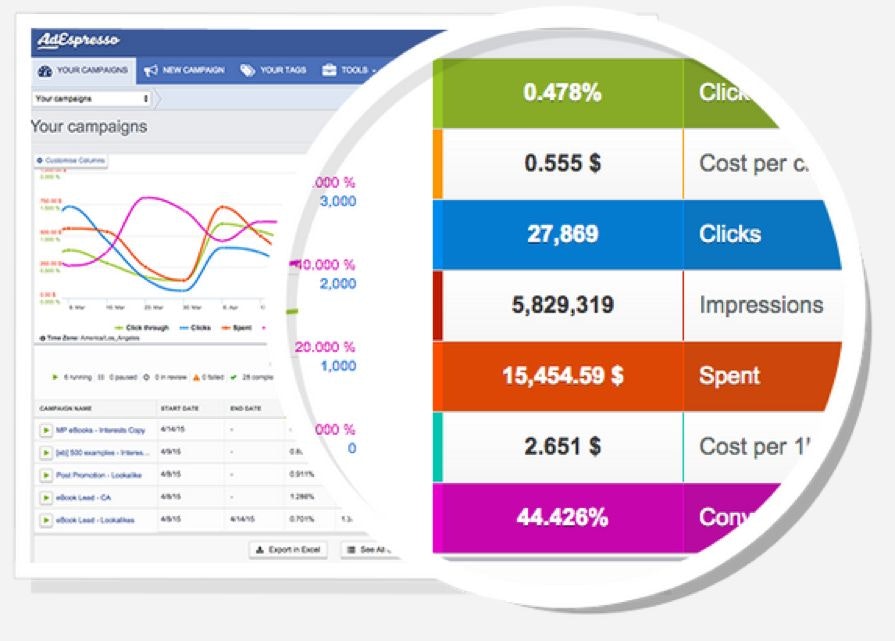
Perfect Audience is a Facebook retargeting tool. While you can run retargeting ads to your Facebook audience without a separate tool, Perfect Audience lets you use your Facebook pixel data to retarget your audience on other platforms, such as mobile apps and other websites!
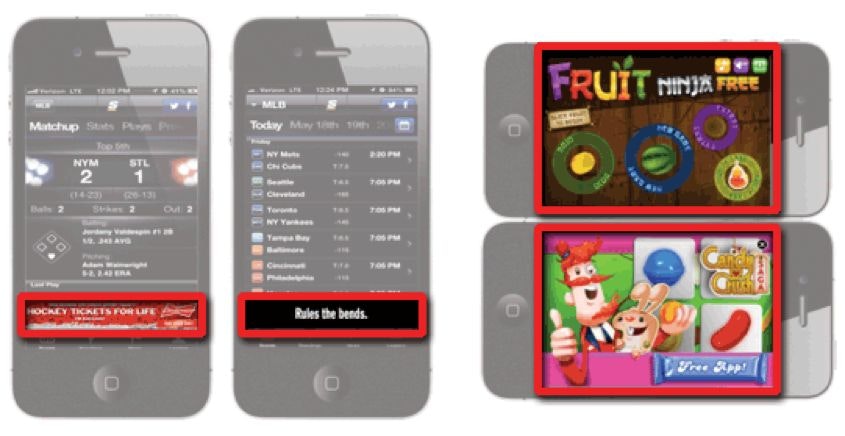
Again, there are tons of other Facebook advertising tools out there. But these are a few that I’ve used and enjoyed.



Conclusion
You’ve just made it through a 20,000-word eBook. Give yourself a pat on the back – but don’t rest just yet! You still have to execute the Facebook advertising strategies you’ve learned.
If you have any questions about Facebook advertising that weren’t answered in this book or in the FAQ, contact us and let us know so that we can add it in. This is a living and evolving resource that we plan to keep up-to-date as Facebook makes changes and we learn more tips and tricks.
Facebook ads can truly be a money-making machine for nearly any business – especially for online stores. If you’re not taking advantage of this platform, you’re missing out on huge sums of money. Start running Facebook ads today!

